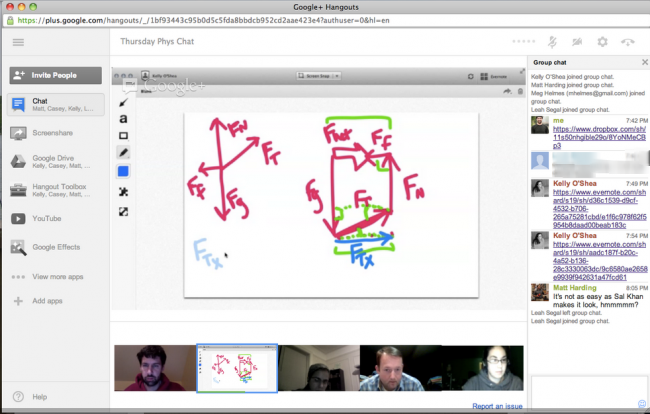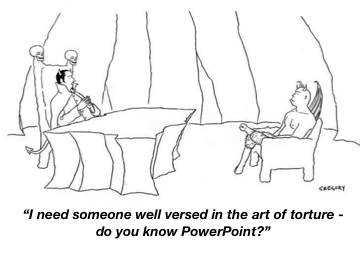I critiqued the “top-down vision of innovation in schools” in a post Innovations in Teaching and Learning: Top Down or Bottom Up?
Want to find out more about instructional innovation in action? That won’t cost you a thing either. Just jump on my Twitter feed and you find superb teachers willing to share their latest student projects. And that free flow of information contrasts with a second “top-down” approach to innovation in schools – the professional learning committee. Imagine being told that, “teachers will now attend PLC meetings.. and don’t forget to fill out the PLC report form and turn it in to your administrator.” No one at the top seems to notice that teachers who want to network have already created their own “bottom-up” support systems via the social web.
PLCs for singleton teachers?
A recent post by high school physics teacher Casey Rutherford, describes how he used Google+ Hangouts (free video conferencing) to create his own PLC. A Physics PLC: Collaboration at a Distance. Casey writes:
This year my school district, like many others, implemented PLCs (Professional Learning Communities) as the driving force behind how we collaborate to help students learn. The directive was that all teachers should meet in a PLC weekly for approximately 30 minutes. This sounds, and can be, great, but I had a problem. …. For 7 years I had been the only physics teacher. …
Enter Twitter. I’ve been on Twitter almost two years now, and I have learned more on Twitter in these two years than the previous six, which included a masters degree. Among other things I have managed to build a pretty awesome PLN (Personal Learning Network) that includes a couple hundred incredible physics and math teachers from around the country.
Casey posted a tweet with a link to Google doc soliciting members for his online PLC:
My name is Casey Rutherford. I am entering teaching for the 8th year, my 7th teaching physics, and my first using Modeling Instruction. I have a relatively odd request.
My school is implementing PLCs, certainly a worthy task. The problem is that at this point there is not a logical person with whom I would form a PLC. Thus my request. I am wondering if any of you would like to form an online PLC with me, working together approximately 30 minutes/week to compare student work. My thought is that we can do a lot with formative assessments, using photos of student whiteboards to form the basis for our conversations. I am, however, open to other ideas as well. …
What follows is Casey’s step-by-step description of how his team used a G+ Hangout to manage their PLC sessions. It includes details about managing the Hangout, using it to analyze student work, and building meaningful collegial relationships. It’s a very helpful post for anyone looking for practical information on using G+ Hangouts.
Hat tip to Marshall Memo for leading me to Casey’s piece.
Screenshot credit / Casey Rutherford






